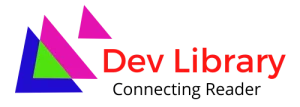Ans: Crossing of a cheque: A cheque is said to be crossed when two parallel transverse line with or without any words are drawn on the left hand corner of the cheque. It is simply a direction to the paying banker that the cheque should be paid only to a banker. Crossing of cheque is very safe because the holder of the cheque is not allowed to encashed it across the counter of the bank. A crossed cheque provides protection not only to the holder of the cheque but also to the receiving and collecting bankers.
Types of crossing:
1. General crossing: A general crossing is a crossing where a cheque simply bears two parallel lines with or without any words and without any specification. According to Sec. 123 of the Negotiable Instrument Act, 1881, “When a cheque bears across its face an addition of the words. “and company” or any abbreviations thereof between two parallel transverse line or of two parallel transverse lines simply either or without the words, “Not Negotiable” that addition shall be deemed a general crossing. Simplify, in case of General crossing words such as “and company”, “not Negotiable”, “Account payee” etc. may be inserted between the lines.
A general crossing cheque protects the drawer and also the payee or the holder thereof. Whenever a drawer desires to make payment to an outstation party, he can cross the cheque so that even if the cheque is lost, it means only a piece of paper is lost and nothing beyond that. If by any chance, it is encashed by a third and unauthorized person, it is possible to find out to whose account the amount is credited and the unauthorized person can be identified and suitable action taken against him.
2. Special crossing: Section 124 of the Negotiable Instruments Act, 1881 defines special crossing as “where a cheque bears across its face, an addition of the name of a banker with or without the words “not negotiable”, that addition shall be deemed a crossing and the cheque shall be deemed to be crossed specially and to be crossed to that banker.”
Thus, in case of special crossing, the name of a particular bank is written in between the parallel lines. The main implication of this type of crossing is that the amount of the cheque will be paid to the specified banker whose name is written in between the lines. Special crossing is in a particular bank and by special crossing, he is assured of double safety, safety to the drawer and safety to the payee.
3. Account payee crossing: This type of crossing is done by adding the words ‘Account Payee’. This can be made both in general crossing and special crossing. The implication of this type of crossing is that the collecting banker has to collect the amount of the cheque only for the payee. If he wrongly credits the amount of the cheque to another account, he will be held responsible for the same.
4. Not negotiable crossing: When the words ‘not negotiable’ is added in generally or specially crossed cheques, it is called not negotiable crossing. A cheque bearing not negotiable crossing cannot be transferred. If a cheque bearing ‘Not negotiable crossing’ is transferred, care must be taken regarding the ownership of title of both the transferor and transferee.



